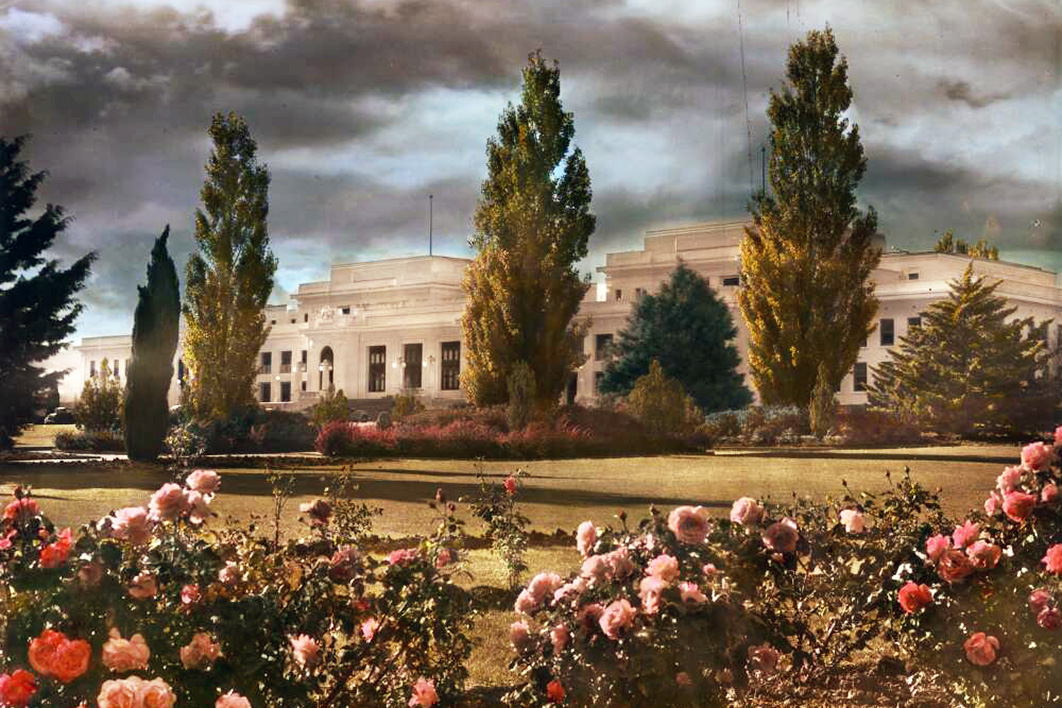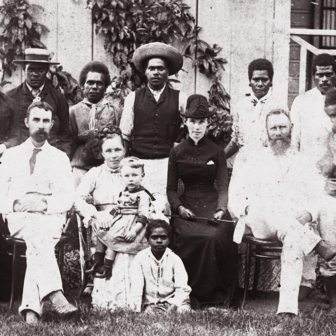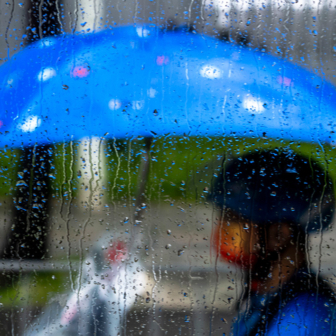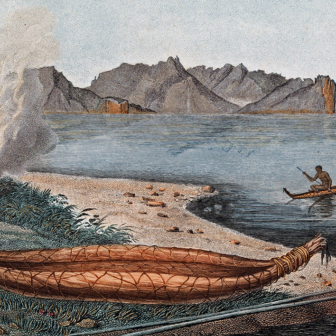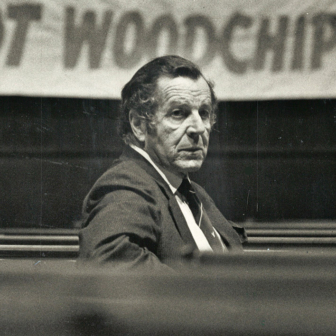If you are old enough to remember ANZAAS congresses, you might be wondering what happened to them. The last one was held in Adelaide in 1997, though ANZAAS itself lives on, still promoting communication and interaction between scientists in different disciplines and fostering public interest in science. But it is nothing like the organisation it once was. With the gradual creation of breakaway specialist societies and, from 1954, the Australian Academy of Science, ANZAAS has declined.
Originally known as the Australasian Association for the Advancement of Science, it was founded and held its first congress in Sydney in 1888. New Zealand was always a part of it, but NZ wasn’t included in the name until 1930. Congresses were held every two or three years (though not during the first and second world wars), rotating through all colonial/state capitals, and some regional cities, in both countries.
Sixty-four congresses were held between 1888 and 1997, and the sheer complexity and prestige of these events is impossible to overstate. They attracted hundreds, often thousands, of delegates, the largest being the Canberra-hosted gathering in 1963, with 3860 delegates. Each congress consisted of concurrent meetings of various “sections” of the organisation, each led by a section “president” who was always a leading academic in that field. A congress president led the entire proceedings and was usually (but not always) an eminent scientist.
Sections were added to and rearranged over the years, but essentially they covered the various physical and life sciences, as well as anthropology, economics, psychology, philosophy, geography and history, the latter elevated to the ranks of research-based sciences in 1911. Not until 1973 did the historians break away to establish their own society, the Australian Historical Association.
Congresses became increasingly elaborate with the addition of medal presentations, special lectures and symposia, exhibitions, films and meetings of ancillary learned societies. Excursions were arranged to various sites of interest in the host city and its surrounds, and a busy round of receptions, luncheons, parties and other activities was organised for “ladies.”
Delegates would arrive at the appointed city, trailing wives and daughters, and would be handed a copy of the bulky program and a “handbook” describing the history, geography and cultural and scientific features of that city. Journalists from the local and interstate dailies would also assemble. A local committee, assisted by several satellite sub-committees, would have spent the preceding two or three years preparing for the great occasion. It was like an Olympics, only for boffins.
There is a history of ANZAAS, a multi-authored work edited by historian of science Roy MacLeod and published in 1988 to mark the organisation’s centenary. At the core of the book are chapters on the major scientific disciplines, using ANZAAS as a lens to “magnify and clarify” (MacLeod’s words) the traditions in each one. Several other chapters discuss ANZAAS’s role in fostering relations between science and society. Unsurprisingly, the book reflects the traditional lines of power and authority established by ANZAAS itself.
My interest began accidentally. Writing about Australian historiography, as I occasionally do, I sometimes bump up against ANZAAS because so many historians gave papers at its congresses. For my recent essay on University of Melbourne historian Kathleen Fitzpatrick, I learned that she was president of the history section at the 1949 congress in Hobart, and from there I began to notice how remarkable ANZAAS congresses really were, socially as well as intellectually.
It seems weird but good that the historians had to jog along with the geologists and oceanographers and so forth. They all had their separate sessions to attend, but often the most useful exchanges at conferences are during the breaks. So, if a historian is interested in how physical environments have shaped social interactions (and why wouldn’t they be?), there would be plenty to discuss as they all queued up for tea and biscuits.
An alternative way of understanding ANZAAS might be to set aside the top-down approach and instead give due weight to the informal as well as the formal aspects of ANZAAS congresses. Extending that thought: what if we interrogate them as observances of a ritual?
Congresses had ritual characteristics. They were repetitive and structured, featured symbolic elements, and accorded status and prestige to leading members of the group. Everyone involved — presidents, delegates, wives, taxi drivers and hotel maids — had assigned roles to play. A significant variant was of course the host city, but even then there was regularity and predictability in the rotation.
This approach would accommodate lateral and bottom-up modes of analysis alongside top-down. Any ANZAAS congress would do as a case study, but the one held in Canberra in 1939 seems as good as any because it falls at about the halfway mark of the congresses. Why not crack that one open to see what might fall out?
It ran from Wednesday 11 January to Wednesday 18 January and was held at Telopea Park School (empty of students for the holidays), probably because that was the only venue that could accommodate all the parallel sessions. Major addresses were held in Albert Hall, on Commonwealth Avenue.
Canberra’s population then was only about 11,500. Some 1200 people registered for the congress, 800 from interstate, so in the days preceding the congress the baby capital was bracing for impact. Every available room in every hotel, government hostel and guest house in Canberra and Queanbeyan was booked. Hundreds of visitors were billeted in private houses and the rest accommodated in tents and cars in a little encampment of eggheads next to the Molonglo river. The development of Lake Burley Griffin was far in the future.
Parliament House had opened in 1927, flanked by a few austere office blocks for the small cadre of public servants who had been persuaded to move from Melbourne. These folk lived either in government hostels or in suburbs of boxy little houses. A few institutions of culture and learning had been established, including the Australian Institute of Anatomy at Acton, and the Commonwealth National Library in a building (long since demolished) on King’s Avenue. No university yet except the Canberra University College. The Australian War Memorial was still two years away from its official opening.
The ANZAAS grandees that year included the governor-general of Australia, Lord Gowrie, and the governor-general of New Zealand, Lord Galway, as the congress’s co-patrons. Sir David Rivett (chemistry) was outgoing president, and Sir Ernest Scott (history) incoming president. Sir Hubert Murray, lieutenant-governor of the territory of Papua, and Sir Douglas Mawson (geology) were vice-presidents.
Dozens of other prominent academics and thinkers were on the program, including R.M. Crawford (history), F.E. Williams (anthropology), H.C. Coombs (economics), Sir Kerr Grant (physics), Frank Macfarlane Burnet (immunology) and industrialist Russell Grimwade. Star guest speaker was H.G. Wells, the English novelist and public figure, visiting Australia for a lecture tour.
What of women’s participation? Women were strongly present in Australian science from the late nineteenth century until the end of the second world war. Jane Carey, in her book Taking to the Field: a history of Australian Women in Science, surprised even herself with this finding, for she was expecting a story of marginalisation and exclusion. After the war, however, the valued contribution science had made to the war effort enhanced its prestige and led to a masculinisation of the field. Women’s representation in science didn’t reach 1930s levels again until the 1970s.
Within ANZAAS, women’s fortunes were mixed. From its inception women were admitted as members, and the first woman to give a paper at a congress gave it in Sydney in 1888. (It was Flora Campbell speaking on “The Diseases of Plants.”) Overall, however, it has been a male-dominated organisation. No woman was ever elected president of a congress, and very few have received its medals or given any of its prestigious lectures. Roy MacLeod’s history offers no particular focus on the role of women and only two of his sixteen authors were women.
Only twenty of the 288 formal papers, or about seven percent, were given by women at the 1939 congress. Academically, zoologist Georgina Sweet was the most senior woman, she having been appointed associate professor at the University of Melbourne in 1919. In anthropology there were Margaret Mead, Olive Pink and Camilla Wedgwood. Three women gave papers in geology — Irene Crespin, Dorothy Hill and Germaine Joplin. Dora Lush gave a paper in a session on viruses, and young historian Kathleen Fitzpatrick was there to give her first major academic paper.
Probably the most memorable aspect of this congress for its participants was the weather. In January 1939 much of eastern and southern Australia was gripped by a heatwave. Even as the Victorian delegates disembarked at Canberra railway station, enormous areas of their state were burning. On the Friday of the congress, 13 January, thirty-six people died in Victoria on what became known as Black Friday, one of the worst fire events in Australian post-colonial history. Fires were also burning in NSW and the ACT that week.
On opening day, Wednesday 11 January, the mercury in Canberra touched 108.4F (42.5C) at 3pm, the highest recorded in the capital to that point. For the rest of the congress the temperatures never dipped below 100. Small wonder the Canberra Times delighted to note that some professors took the liberty of loosening or even removing their ties.
By Friday, delegates’ enthusiasm had begun to wilt and attendance at the sessions was down. An eerie yellow light was enveloping Canberra from bushfires burning to the west. Out-of-town excursions were abandoned but some delegates made an excursion of their own to join the fire-fighting effort at Weetangera (now part of suburban Canberra). Douglas Mawson, Douglas Copland (economics) and James Darling (headmaster of Geelong Grammar) were among the delegates who fought alongside locals to prevent the fire entering the capital. Burnt leaves from a fire at Uriarra were seen falling on Parliament House at 11 am on Saturday morning.
In my absorption in these singular events I seem to have drifted from the idea ANZAAS congresses as rituals; ANZAAS Canberra 1939 is just far too interesting an event in itself. Then it occurred to me: wouldn’t this make an ideal plot for a murder mystery? Yes! A whodunnit.
Think of like this: the tiny population of the remote capital explodes when ANZAAS rolls into town. Searing days and sweaty nights. Smoke from encroaching fires. Everyone is sleep deprived but doing their best to put on their best bib and tucker each day. Scientific rivalries; anxieties over the worsening international situation. And with so many interesting, easy-to-research places and people, a novelist would be spoiled for choice. This wouldn’t be serious crime fiction, just a romp, and the best fun would be to sideline the men to make the women the heroes of the story.
I’m not a novelist, but I thought I’d test out my idea with a little scenario. My leading characters are all women, but not all are scientists; they are drawn from the wider pool of women present. Women are made visible and their knowledge is the key to the mystery. The murder would be incidental to the real violence of the novel, which would be the knife it would take to the scientific patriarchy.
How excited and nervous those women scientists must have been in 1939, those seven percenters. How very, very keen. Keen as mustard.
The murder occurs on the first formal day of the congress, that day of 42.5C heat. A party is held at 3.30pm in the gardens of Parliament House. Marquees are set up among the young trees and beds of roses. Australian flags and Union Jacks are draped about to offer a patriotic backdrop to the welcome extended by parliament to the congress delegates.
At the congress that morning, Queensland weather forecaster Inigo Jones had predicted the heatwave to break that afternoon, but a brief thunderstorm just before 4pm did little other than turn conditions from dry to sultry.
Having grown up in Brisbane, geologist Dorothy Hill was not especially bothered by heat, but the baking northerly wind that had been blowing across Canberra all day was setting even her nerves on edge. It’s hard to manage a plate of sandwiches and a cup of tea while the wind tugs at your hat and flaps the skirt against your legs.
Other women were similarly challenged. Most were wives and daughters, Dorothy decided, noticing how they tended to stay close to their menfolk. But here and there were little clusters of university women, delegates like herself, preparing to give papers. Dorothy had been chatting with her own little party of Queensland friends until she turned back to the tea tent for a glass of water.
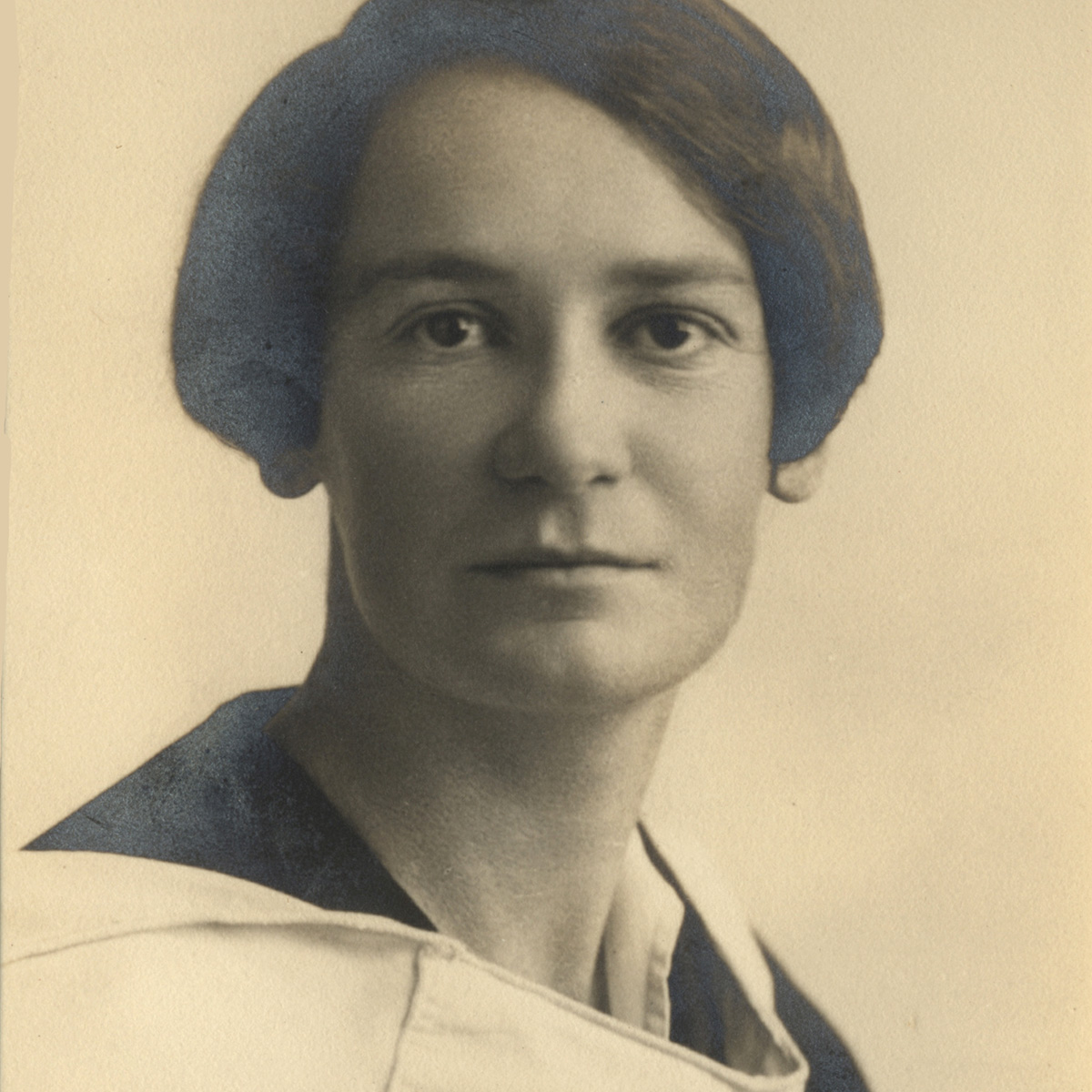
“Actually, I wrote it myself”: an undated photograph of Dorothy Hill in academic robes. Fryer Library, University of Queensland
Suddenly a man next to her addresses Dorothy with some hearty remarks about the heat. Now she’s trapped. Nonplussed when Dorothy mentions her specialism (he’d picked her out as a wife or daughter), the man recovers and begins a long description of an article on the structure of rugose corals he’d read recently.
Yes, says Dorothy when he pauses for a bite of his sandwich, I know that paper; actually, I wrote it myself. Munching away happily, the man doesn’t hear. He carries on with his exposition of Dorothy’s own article, although he’d obviously read no further than the abstract. Well, you know, I collected that data and wrote it up myself, she says. He doesn’t listen. Or doesn’t believe her. It’s incomprehensible to him that a woman could be a geologist.
Darn, I can’t just walk away, Dorothy thinks, it would be too rude. Her eyes wander, and then, with the man still droning in her ear about her own subject, she notices on the other side of a rose bed a young woman in precisely the same predicament as herself. She too has been trapped by a man who could bore for Australia, he also munching on a sandwich. Dorothy watches. What pretty shoes that woman is wearing. She glances ruefully at her own practical lace-ups.
Ah, that must be Kathleen Fitzpatrick: historian, University of Melbourne. Dorothy had heard a little about her. Apparently she is divorced. Mr Fitzpatrick was some kind of radical journalist, apparently, and a drinker. Kathleen was far better off without him, Dorothy is certain. It must take guts to rebuild your life after a divorce — as Kathleen obviously had done, or else she wouldn’t be here. Dorothy admires guts above all things, much more than pretty shoes.
Now Kathleen’s interlocutor is leering down at her, sweating profusely in an ill-fitting suit. Trapped as she is next to a bed of crimson Étoile de Hollandes, she cannot escape without snagging her frock. Wildly she looks around and her eyes lock with Dorothy’s. Instant understanding. What should I do? Wait, I’m coming.
Suddenly Kathleen’s man turns purple. He gasps, he chokes. Drops his sandwich. He collapses at her feet, writhing. Kathleen backs away, horrified. Dorothy is with her now, clutching her arm. Conversation around them stops. Everyone is frozen with surprise, staring at the man. Then, shouts for help. Surely in that crowd, there must be a medical doctor?
There is. He dashes forward and loosens the man’s tie. The pair is quickly surrounded by onlookers and Dorothy draws Kathleen away. They are both trembling. The doctor is talking about heatstroke, but the two women know it’s not that. They were closest and had seen what happened. The man is not suffering from heatstroke. He’s dead.
The thunderstorm breaks. In the ensuing confusion the victim is whisked away and the half-eaten sandwich disappears. Guests forget the incident as they scurry for shelter. No one seems to know anything about the man. He was there by himself and no one recognises him.
But there is someone present even more observant than the average scientist. Ann McEwen, wife of interior minister John McEwen, is chairwoman of the congress’s ladies’ committee (this is true, she was) and chief organiser of all its social events. She too had noticed Kathleen Fitzpatrick’s discomfort and was hurrying over to intervene. (There’ll be none of that kind of thing at any of my parties, she thinks.)
She cuts through the group (all of them including the “doctor” are in on the murder plot) who cluster around the motionless figure on the grass, and she sees in an instant that he is dead.
She sweeps Kathleen and Dorothy through a side door into Parliament House. What happened? He just dropped, says Kathleen, after he took a bite of his sandwich. What kind of sandwich? Mustard and cress, Kathleen thinks. Mustard? That can’t be. Ann has given strict orders that mustard cannot be served at any of the congress’s parties. Professor Sir Ernest Scott, congress president, is allergic to it, and his wife, Mabel Scott, has written ahead to beg for a mustard-free congress. (I’m making this up, of course, I have no idea of Scott’s reactions to mustard.)
Ann McEwen turns on her heel and heads for the parliamentary kitchens. She knows the way because she’s been there earlier in the afternoon to check on the arrangements. Dorothy and Kathleen run after her.
No madam, says the head chef, we did not serve mustard this afternoon. We had your instructions. Absolutely no mustard. Have there been any strangers in the kitchen this afternoon? Well, madam, extra staff have been taken on for this event of course. Anyone acting oddly? Anything out of the ordinary? No madam, certainly not.
A timid voice pipes up. Excuse me, madam. It’s Joan, one of the kitchen hands. I saw a man. A man? What man? A stranger he was, with a plate of sandwiches. The head chef tries to cut her off. Silly girl, don’t listen to her. But Joan persists. The plate wasn’t one of our plates, that’s how I remember. What was this man like? He didn’t seem to know what he was doing, Joan thinks. Not actually a real waiter. How could she tell? The head chef is glaring at her. Don’t believe her, madam, she’s always making up stories.
But the three do women listen to Joan, and they do believe her.
So that’s my murder scenario. The poison, of course, is disguised in the mustard.
Who is the victim? That’s always critical in any whodunnit, naturally. Their death is the key to understanding the relationships and the society with which the novel is concerned. Probably he is engaged in research connected with the coming war: something to do with sunspots, or radio waves, or biological warfare. He is clever but not brilliant, garrulous and susceptible to women. He talks too much and certain people want him out of the way.
The conspirators could be rival scientists, perhaps with an industrialist thrown in for extra interest. Or perhaps our man is spying for foreign power that has decided he is surplus to requirements. A proper novelist (not me) would have to work all that out. In keeping with the scientific theme, the climactic scene of the novel, where the conspiracy unravels and the murderers are revealed, would be at the Commonwealth Solar Observatory on Mount Stromlo. Of course, the whole incident must be hushed up. For the security of the nation, everyone is sworn to secrecy.
Dorothy Hill would make an admirable sleuth. After gaining first class honours in geology at the University of Queensland she won a scholarship to take her to Cambridge where she graduated with a PhD in palaeontology in 1932. She loved sport and in her undergraduate days played hockey for Queensland. In Cambridge she gained a pilot’s license, apparently for no other reason than that it was an outlet for her adventurous spirit (that’s true, I’m not making that bit up).
Her more decorous associate, Kathleen Fitpatrick, is initially reluctant to be drawn into the drama, but her sense of justice prevails. It is she who apprehends the chief murderer on that hot afternoon on Mount Stromlo by squirting perfume in his eyes at the critical moment. Her involvement with the case doesn’t hold back her career: in 1948 she will become the first woman to be appointed associate professor in a non-scientific field.
Joan the kitchen hand is taken on by Ann McEwen as Ann’s personal assistant. The four women keep in touch. Twenty years later, in 1959, they reunite to celebrate Dorothy’s appointment as the first woman professor in any field in an Australian university. Ann is too unwell to travel from Melbourne so Dorothy flies her plane down, and they all gather in the Hopetoun Tearooms for mustard and cress sandwiches. On the table they place Kathleen’s perfume bottle and a vase of crimson Étoile de Hollandes. •
